The Havana rabbit is very good and popular as a show animal.
The Havana rabbit is a medium-sized rabbit that has a compact body size with a weight that must not exceed 6.5 pounds. Their bodies are short and round, and the top should create a half-circle that rises over the hip area right before or down its tail.
The Havana has short and straight legs with toenails with dark coloration. The ears are close together and are shorter compared to another medium-sized breed. The eyes are medium-sized while their heads are short, and their cheeks are full.
This breed is one of the oldest recognized rabbit breeds and is known as the ancestor of popular breeds like the Fee de Marbourg, Gris Perle de Hal, and the Perlefee.
Coat and color.
The Havana rabbit has short and soft flyback fur, which is low-maintenance. You don’t need to spend too much time grooming the Havana’s fur because it's short and the rabbit can groom itself. The Havana requires only weekly grooming to keep it in tip-top condition. It sheds minimally, but during molting, its fur should be groomed at least twice weekly.
History of the Breed.
Despite its name, Havana did not start in Cuba. Havana was initially developed in Holland when a brown rabbit was born from a litter of Dutch does during the 1800s. The rabbit’s lovely dark color inspired local breeders to create a new breed. “Havana” was used to name this rabbit because of its resemblance to Cuban cigars from Havana.
The new breed was brought to the United States in 1916, and it was accepted to the American Rabbit Breeders Association in 1965. The black Havana was soon accepted in 1980, while the broken color variety was created in 2008.
Temperament and Behavior.
Rabbits are sweet creatures who easily bond with their human family so long as they are given time and space to properly socialize on their own terms. Havana rabbits are great to show and pet bunnies who enjoy being free to roam indoors, or outdoors in a fenced yard. While not the most energetic rabbit breed by any means, these medium-sized rabbits are perfectly capable of running around indoors or out and letting out a little mid-air hop.
Should you decide to engage in some one-on-one playtime, you may find that your particular rabbit enjoys some ear or head scratches and some gentle back petting. Because of its medium size, the Havana rabbit makes a great pet for families with children of any age. Because it isn’t too high energy, it makes an attractive pet for seniors looking for a fuzzy companion in their lives.
Some rabbits need to be entertained with many toys, whether it is a store-bought one or something as simple as a toilet paper roll is entirely up to you, others don’t need much to keep them happy. It all depends on your particular rabbit’s personality, which each pet parent needs to discover with lots of playtime outside of their enclosures.
When it comes to potty-training your rabbit, you may find it is significantly more difficult than training another pet such as a cat or dog. While more challenging, it is definitely not impossible to litter-train rabbits but they do require much more patience and time than other animals. Many pet parents have found that placing several litter boxes around the house works best, as your rabbit won’t have to travel to the other side of your house to do the deed and risk not making it.
Reproduction.
When it comes to Havana rabbits, these reproduce just like any other rabbits. This is a domesticated breed, therefore is forced to breed in captivity to get baby Havana rabbits. Rabbits have the ability to breed all year round and can start reproducing as early as 5 to 8 weeks old. First, the buck or the male rabbit is placed in his enclosure, and then after a few days, the doe or the female is introduced to the male. Experts say that this practice can increase the chances of breeding successfully.
The female will first remain still as the male sniffs her from head to tail, but sometimes she will resist and will escape and run inside the cage. The male will run after her and then pin her, but she will resist. If this happens for about an hour or so, remove her. Re-introduce the female after an hour.
Sources : https://herebunny.com/care/havana
https://www.petguide.com/breeds/rabbit/havana-rabbit/
===============
Copyright Disclaimer:
We respect the copyright interests of the individual owners in the video and don't claim to own the original clips.
However, under Section 107 of the Copyright Act 1976, allowance is made for "fair use" for purposes such as criticism, comment, news reporting, teaching, scholarship, and research. Fair use is a use permitted by copyright statute that might otherwise be infringing. The recent amendments to the Copyright Act of 1976 pertain to music. "Fair use" remains in force for film and video.
The Havana rabbit is a medium-sized rabbit that has a compact body size with a weight that must not exceed 6.5 pounds. Their bodies are short and round, and the top should create a half-circle that rises over the hip area right before or down its tail.
The Havana has short and straight legs with toenails with dark coloration. The ears are close together and are shorter compared to another medium-sized breed. The eyes are medium-sized while their heads are short, and their cheeks are full.
This breed is one of the oldest recognized rabbit breeds and is known as the ancestor of popular breeds like the Fee de Marbourg, Gris Perle de Hal, and the Perlefee.
Coat and color.
The Havana rabbit has short and soft flyback fur, which is low-maintenance. You don’t need to spend too much time grooming the Havana’s fur because it's short and the rabbit can groom itself. The Havana requires only weekly grooming to keep it in tip-top condition. It sheds minimally, but during molting, its fur should be groomed at least twice weekly.
History of the Breed.
Despite its name, Havana did not start in Cuba. Havana was initially developed in Holland when a brown rabbit was born from a litter of Dutch does during the 1800s. The rabbit’s lovely dark color inspired local breeders to create a new breed. “Havana” was used to name this rabbit because of its resemblance to Cuban cigars from Havana.
The new breed was brought to the United States in 1916, and it was accepted to the American Rabbit Breeders Association in 1965. The black Havana was soon accepted in 1980, while the broken color variety was created in 2008.
Temperament and Behavior.
Rabbits are sweet creatures who easily bond with their human family so long as they are given time and space to properly socialize on their own terms. Havana rabbits are great to show and pet bunnies who enjoy being free to roam indoors, or outdoors in a fenced yard. While not the most energetic rabbit breed by any means, these medium-sized rabbits are perfectly capable of running around indoors or out and letting out a little mid-air hop.
Should you decide to engage in some one-on-one playtime, you may find that your particular rabbit enjoys some ear or head scratches and some gentle back petting. Because of its medium size, the Havana rabbit makes a great pet for families with children of any age. Because it isn’t too high energy, it makes an attractive pet for seniors looking for a fuzzy companion in their lives.
Some rabbits need to be entertained with many toys, whether it is a store-bought one or something as simple as a toilet paper roll is entirely up to you, others don’t need much to keep them happy. It all depends on your particular rabbit’s personality, which each pet parent needs to discover with lots of playtime outside of their enclosures.
When it comes to potty-training your rabbit, you may find it is significantly more difficult than training another pet such as a cat or dog. While more challenging, it is definitely not impossible to litter-train rabbits but they do require much more patience and time than other animals. Many pet parents have found that placing several litter boxes around the house works best, as your rabbit won’t have to travel to the other side of your house to do the deed and risk not making it.
Reproduction.
When it comes to Havana rabbits, these reproduce just like any other rabbits. This is a domesticated breed, therefore is forced to breed in captivity to get baby Havana rabbits. Rabbits have the ability to breed all year round and can start reproducing as early as 5 to 8 weeks old. First, the buck or the male rabbit is placed in his enclosure, and then after a few days, the doe or the female is introduced to the male. Experts say that this practice can increase the chances of breeding successfully.
The female will first remain still as the male sniffs her from head to tail, but sometimes she will resist and will escape and run inside the cage. The male will run after her and then pin her, but she will resist. If this happens for about an hour or so, remove her. Re-introduce the female after an hour.
Sources : https://herebunny.com/care/havana
https://www.petguide.com/breeds/rabbit/havana-rabbit/
===============
Copyright Disclaimer:
We respect the copyright interests of the individual owners in the video and don't claim to own the original clips.
However, under Section 107 of the Copyright Act 1976, allowance is made for "fair use" for purposes such as criticism, comment, news reporting, teaching, scholarship, and research. Fair use is a use permitted by copyright statute that might otherwise be infringing. The recent amendments to the Copyright Act of 1976 pertain to music. "Fair use" remains in force for film and video.
- Catégories
- Chats de Race Havana Brown
- Mots-clés
- bunny, rabbits, rabbit








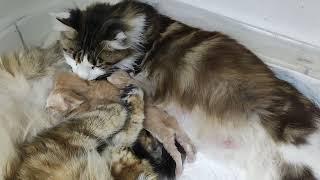
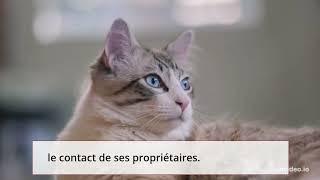
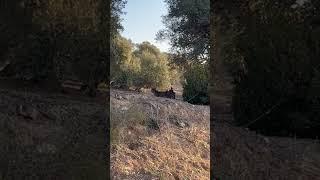
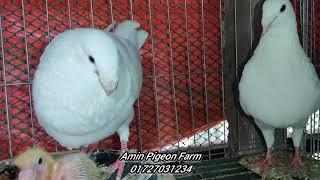
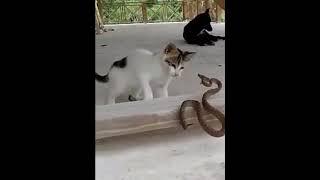


Commentaires